A miniature painting lamp is an essential tool for any miniature painter because it provides the perfect light source to enhance the color and details of their work. But what makes a great miniature painting lamp?
In this article, I’ll discuss one important feature of lighting: color rendering index (CRI). Then, I’ll discuss the other key features of a miniature painting light that are important to consider.
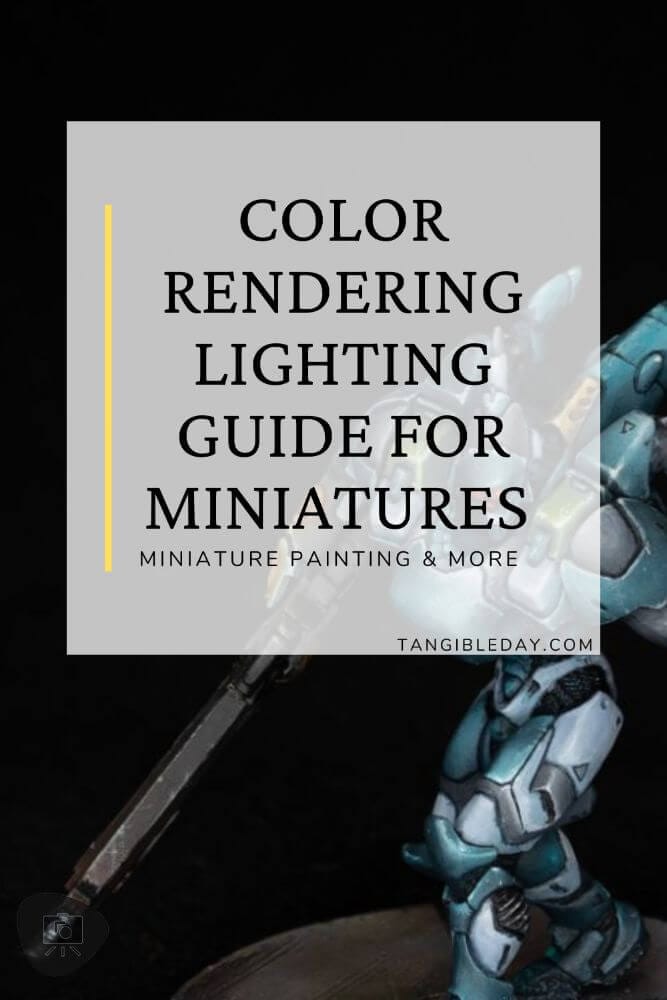
Key Points:
- Color rendering index (CRI) is a quantitative measure that assesses how accurately colors of various objects appear under an artificial light source when compared to natural daylight (source)
- I recommend a CRI of 90 or higher for miniature painting (source)
- High CRI lighting leads to improved color appearance that reflects what you would see with a natural light source
- When searching for the right light, it’s important to consider other factors such as brightness level, angle of diffusion and lamp life
- Selecting the right light quality is essential in achieving the desired effects in any artwork, especially for miniature painting, realistic scale modeling, and photography
- For cameras, color rendering capability is more limited by the range of the spectral power distribution (or the intensity of different wavelengths within the visible spectrum, which combined together produce the color and quality of light emitted by the light source)
other useful hobby lighting articles:
- How LED Ring Lights Can Improve your Miniature Photography
- Lighting Guide for Photographing Wargaming Miniatures (Tips)
- Ways to Choose the Best Hobby Lamp (Top 5 Reviewed)
- Lighting Styles and Techniques for Miniature Art Portfolios
- Desk Magnifying Lamps for Painting Miniatures and Model Crafts
Read on for a quick guide about CRI and other important features to consider when selecting the best lighting for your miniature painting needs.
Light: More Than Illumination
While I won’t get into the granular details of my academic research, which you can find elsewhere, I will say that light does more than just illuminate objects; it also serves as a tool to interact with the world around us.
The breadth or bandwidth of any lamp’s light spectrum is governed by its energy and emitting source (e.g., light output waves traveling outward from halogen bulbs, or fluorescent lamp). Depending on the wavelength, power intensity, light can heat objects, melt or cut them, and even fuse things together, e.g., welding lasers.
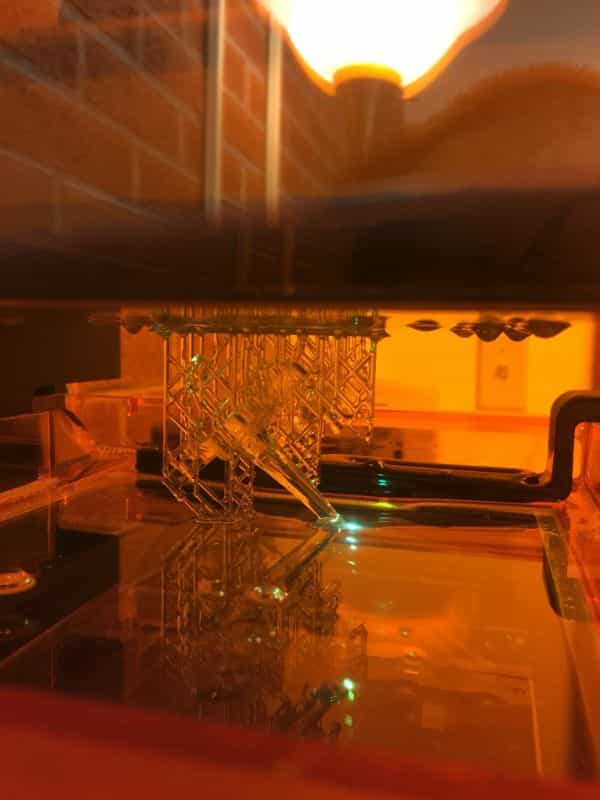
As a concrete example: You can use a UV laser to turn liquid resin into a solid (i.e., 3D printing), cut metal (e.g., CNC machines) or to excite the electrical properties of a genetically modified nerve cell in a dish, i.e., optogenetics. Light as a tool is similarly relevant for miniature painting and scale modeling, where the subtle nuances of color are key to creating a realistic or surrealistic artwork.
Light is energy…
All light is energy that emits from a source and travels outward at a constant speed. How we see things in the world depends on what that Light encounters along the way (source). If a unit of light “hits” something, energy is exchanged, just as if two cars collide.
It’s violent, and the end result is something different in the type, kind, or character of light that we see, perceive, and collect.
RELATED: PROFESSIONAL TASK LAMP FOR WORKING WITH MINIATURES AND MODELS
The science of light study is called Photometry, which measures qualities of light and helps us understand the relationship between light emission, absorption and reflection.
In a lighting laboratory, Photometry is often used to design and create lighting systems that help us see things in the world around us more accurately. This has been crucial for the movie and film industry.
What Does CRI Mean for the Miniature Painter and Artist?
To the original point of this article, I posed a common question: What is CRI?
CRI stands for Color Rendering Index, which is a measure of how accurately colors are displayed under a light source. A higher CRI value indicates that an object’s color will be more faithfully reproduced when viewed under the light source than if it were viewed under a different light source.
Before artificial lighting systems, the only source of light available was the sun. The CRI of sunlight is considered to be 100, so it’s the gold standard for color accuracy and fidelity.
Before the advent of digital photography and the use of electrical sensors, which replaced the analog film negatives, CRI was not a major consideration.
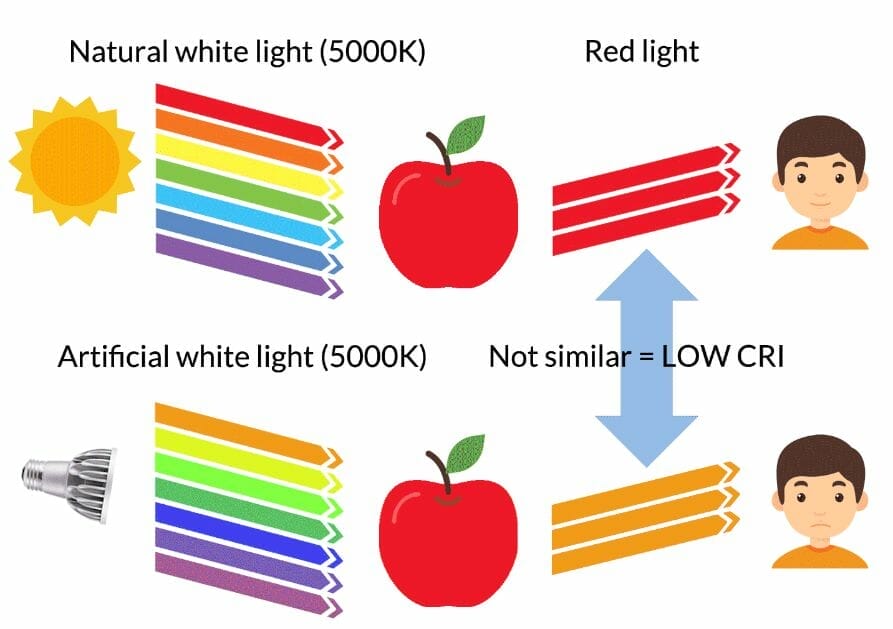
The use of digital displays and advanced sensor technology has made it important to ensure that artificial light sources can properly reproduce colors accurately since our eyes may be unable to see them clearly in the absence of natural sunlight.
Today, with the introduction of LED lights, CRI has become an important factor when selecting a light source. For miniature painting lamps, having a high CRI is especially beneficial since it helps you have the truest representation of the colors in your work.
Therefore, when purchasing a miniature painting light, look for one that has a high CRI rating (above 90) to ensure your colors will be faithfully reproduced.
What You Should KNow about LEDS
LED stands for “Light Emitting Diode”. LEDs are an energy efficient lighting alternative to traditional incandescent light bulbs. LEDs produce light when electrons react with a semiconductor material that is then stimulated by an electrical current. The energy produced is in the form of light and can be adjusted to produce different colors of light (source).
As a miniature painter and hobbyist, LEDs offer several different advantages. First, they have a much longer lifespan than traditional incandescent bulbs. This also happens to be good for the environment, which goes along with trying to recycle your empty plastic sprues.
Secondly, they produce less heat than other lighting sources, which is beneficial for your painting environment as it reduces the risk of scalding your hand if you touch the bulb–don’t ask how I know this!
Lastly, LEDs are directional meaning they produce light in a specific direction which makes them ideal for focusing light on your painting surface.
Of course, LEDs have problems, too. Not all LED lamps or task lighting systems use quality diodes that emit a pure spectrum of light, which can be detrimental to color accuracy and overall vibrancy.
As mentioned above, CRI measures this color accuracy and I would recommend anyone serious about the hobby to consider this unit when selecting an LED lighting system for miniature painting, modeling at any sort of small scale, or even fine art where color is a key component of the artwork.
LIght Source Color Temperature versus CRI
To clarify….
It’s important to understand the difference between color temperature and CRI.
Color temperature is measured in Kelvin (K) and indicates the hue of a light source, while CRI measures how accurately that same light source can reproduce color.
For example, a cool white LED light might have a color temperature of 5500K (i.e., close to neutral daylight), but only an average CRI of 80. This means that while it might appear to be a cool, white color, the colors seen under this light could be slightly distorted.
This would be more evident if you took a photograph using your DSLR or smartphone. The digital image you create using a low CRI lighting system will not accurately reproduce the colors you see in person.
This is because CRI measures the effect of both the source light, and the changed light energy bouncing off an object. In contrast, color temperature only deals with the color of the light source.
Therefore, when selecting a miniature painting light it’s important to ensure you select one that has both a high CRI and a color temperature that you can get close to natural daylight (around 5500K) when the sun is shining on a clear sky (e.g., no clouds). This will ensure your colors will look their best both in person and when photographed.
Miniature Painting, CRI, and the Artist (You)
Do you actually need a high CRI lamp for paint miniatures? No. I painted for years and years using a regular desk lamp with a warm, incandescent bulb. I loved my results (well, not all of it), and it was good enough to start and maintain my miniature painting commission service.
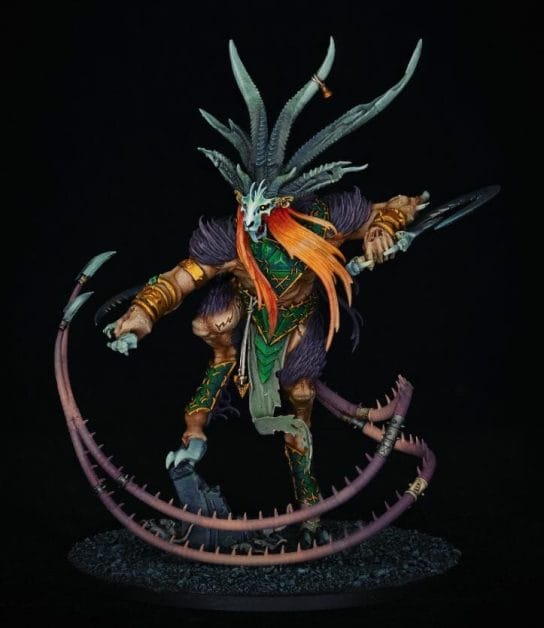
However, with experience, I learned that using sub-optimal lighting made my work harder than it should have been.
This is what happens when you paint miniatures in not-so-great lighting:
- Colors won’t appear vibrant, which could make some paint jobs more frustrating. Your paints will appear more muted.
- Colors will be harder to distinguish as they blend into each other and shadows become hard to spot, e.g., lower visible contrast.
- Highlights will be less vibrant, meaning details could be lost in the darkness. This may lead you to overcompensate your shadows or highlights and your results would suffer.
- You’ll work slower with poor light. For example, it may take longer to apply layers of paint since you can’t clearly see what you’re doing.
- Taking miniature photos of your finished or in-progress work will be difficult or confusing for you. Why do these colors seem to look good in person, but aren’t vibrant in the photo? This is due to poor CRI, hard lighting, or mixed and consistent color temperature.
- Eye fatigue. Bad lighting can make you tired, sleepy, or give you a pounding headache.
And, the list goes on. While CRI in artificial LED lighting systems is major player in determining the quality of modern task lamps for hobby work, it’s not the only one.
READ MORE: BEST LAMPS AND LIGHTS FOR MINIATURES, MODELS, AND HOBBY WORK
Read on to learn more about what good lighting should do for you while painting miniatures, working with scale models, or other arts and crafts that require you to see fine detail and contrast.
8 Other Key Features of Ideal LED Miniature Painting Lights and Hobby Lamps
- Color Rendering Index (CRI)
- Brightness adjustment
- Color temperature control
- Eye protection
- Flexibility
- Durability
- Portability
- Accessories for Videography or Photography
Color Rendering Index (CRI)
As mentioned above, CRI is perhaps the most important feature to consider when selecting a miniature painting light for those looking for color accuracy. CRI (Color Rendering Index) measures the effect of both the source light (from the lamp) and the bounced light energy emitted from an illuminated object.
Also note that some research has shown that a lamp or hobby light with high CRI can also be beneficial psychologically, because the quality of light and color affects how comfortable people feel within a space.
Brightness Adjustment
The brightness of an artificial LED light source is measured in lumens, sometimes in wattage. Lumens is a measure of how much light energy is emitted from a source, per unit area. The more lumens, the brighter the light. Contrary to popular belief, having a very bright light (or using a source with more lumens) isn’t always better. In fact, it could hurt you.
| Lumens | Incandescent light bulb watts | Fluorescent/LED watts |
|---|---|---|
| 600 lm | 40 W | 10 W |
| 900 lm | 60 W | 15 W |
| 1125 lm | 75 W | 18.75 W |
| 1500 lm | 100 W | 25 W |
| 2250 lm | 150 W | 37.5 W |
| 3000 lm | 200 W | 50 W |
When lights are too bright, the objects you’re trying to see may oversaturate and “washout” in their appearance. Colors dull out and you lose visible contrast. In some cases, “hot spots” of light may appear, which are strong reflections of the lamp itself. Some of these visible anomalies could contribute to eye fatigue, strain, and make you uncomfortable.
A dimmer or brightness control on your lamp could be useful. There will be times when bright light is called for; and when less light is needed to keep working comfortably. While I can get into each scenario, I’m sure your intuition for what is bright enough means. As a general rule, I recommend having a lamp that can emit at least 800 lumens for painting miniatures.
Color Temperature Control
The color temperature of a light source can affect how objects appear within a space or in close proximity to it. Color temperature is measured on the Kelvin (K) scale. Warmer colors (like yellow and orange) are at lower Kelvin, while cooler colors (blue) occur at higher color temperatures. Different painting tasks require different lighting temperature to achieve optimal results.

For miniature painting, you’ll want to use a color temperature that mimics natural light (5000-5500K), since this will give you color reproduction that is close to what you would see in open sunlight.
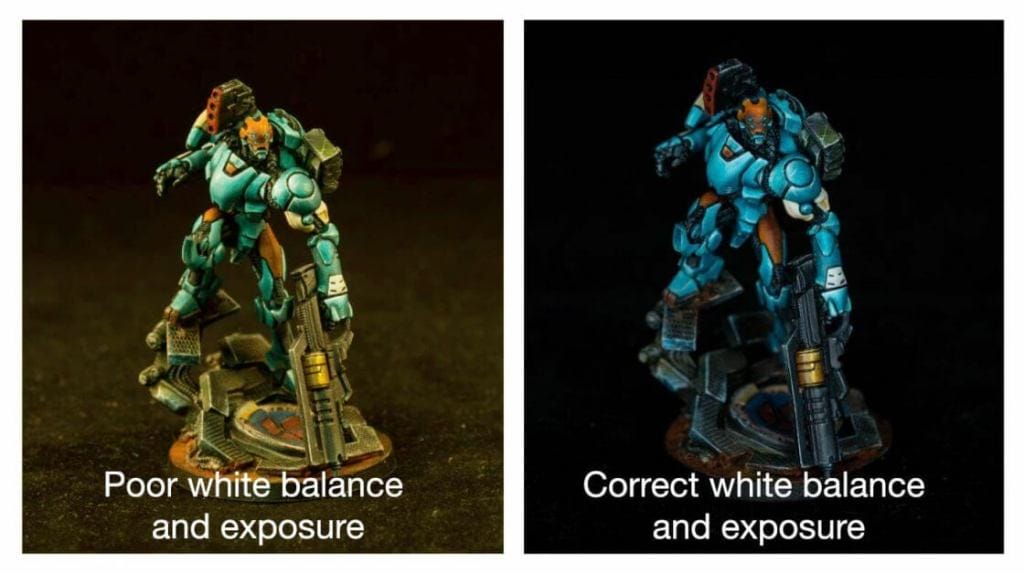
There will be times when you want a warmer tone to with your hobby lamp, however. For example, late at night before bed, a warmer colored light could help you calm down. Blue hued lighting on the other hand will keep you alert and focused on the task at hand.
Eye Protection
Not every LED lamp will be good for your eyes. Flickering or strobing lights are one main culprit for eye fatigue. Additionally, high intensity blue light (which many lesser LEDs emit) can cause damage to the retina of your eyes when exposed to it in large amounts over time (source).
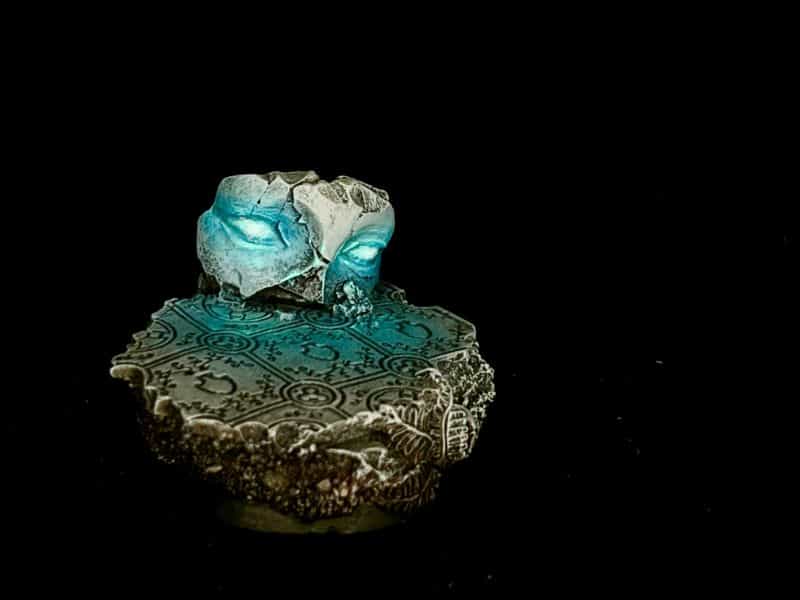
To reduce this risk, you should use LED lights with adjustable intensity and make sure that they are not overly bright. A constant, diffuse LED lighting system is going to make your life more comfortable and protect your eyesight–no matter what you’re using them for.
Flexibility
I know that I’ll need to move my lighting around so I can see my miniatures from every angle. When I want to photograph my work while its still on my desk, I tend to reach for my swing arm lamp and pull it down, so the light shines from the front (in the direction of my camera lens).
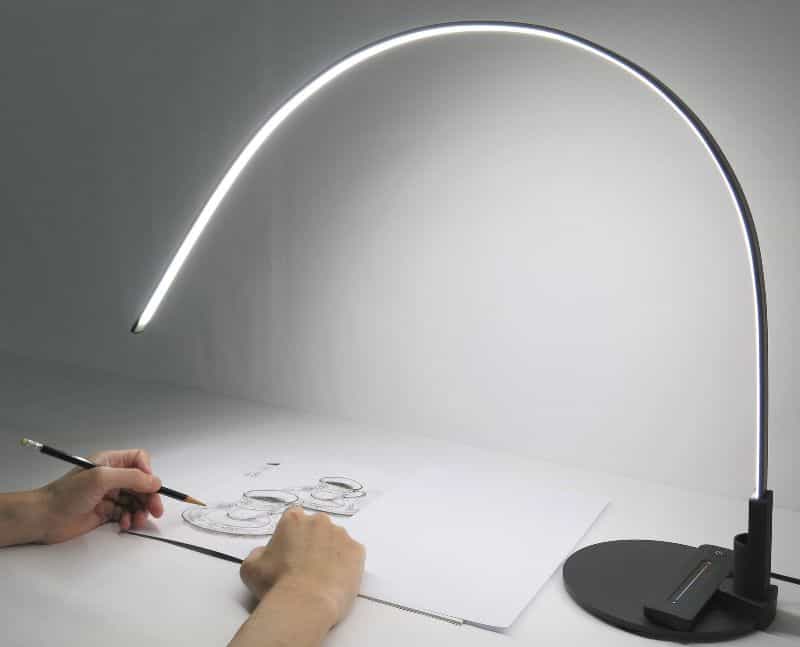
Flexibility in any hobby lighting system, in where and how you place it, is crucial for long-term hobby success. Sure you can have multiple lamps to cover every angle (which I do). But having an adjustable arm that allows you to move the light source around with ease, will allow you to instantly change lighting angles for maximum visibility without a lot of work.
Durability
I don’t bother with tools or equipment that are unreliable. Time is my most valuable resource and if I’m constantly having to replace bulbs, or fix broken pieces of my hobby lamp–I’ll soon get frustrated and look for an alternative.
That’s why I always recommend looking for the most durable and reliably lighting system you can afford (and some aren’t cheap). And metal isn’t always the best material, which can rust, bend or break. Plastic housing with aluminum or similar light weight alloys tend to be a good material for hobby task lamps.
Portability
This isn’t a feature that’s important to me nowadays, especially with world events and such. But if you’re always on the go, moving from place to place, or simply want something you can store away easily, then a compact lighting system would be useful.
You’ll want to make sure that whatever lamp you buy is light enough for you to easily carry, and comes with its own power supply (like a USB cable or battery power) so it can be powered up wherever you happen to find yourself working. Here is my currently recommended compact LED light for taking your mini hobby-on-the-go.
Accessories for Videography or Photography
As I get more into documenting my work for sharing on social media channels, i.e., Facebook, Instagram, I find the increasing need to improve my photography/videography lighting. Good light is the key to great photographs, but so is imagination and creativity (check out these grimdark photos of miniatures!).
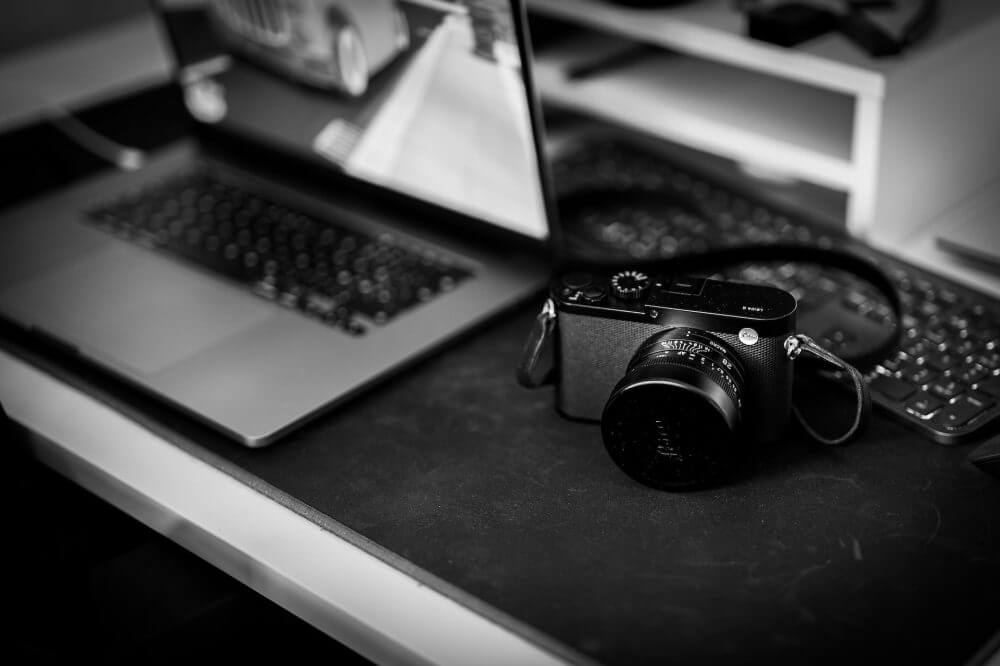
But you can also find accessories to augment your existing lamps to help you change the character, feel, and style of lighting for your photography or video footage. Learn more in this wargaming photography and lighting guide.
How Much Should You Spend on a Hobby Lamp?
“Get the quality you need” is advice I give when people ask me to recommend something for their miniature hobby work. At the outset, I’ll say that you can expect to pay between $100-300 for a high quality LED task lamp with excellent CRI (>90-95) for painting miniatures and models.
During the pandemic, I spent hundreds of dollars of my own money on lighting systems, lamps and such, because I was working and doing the miniature painting thing at home all the time. Indeed, I had a problem with shopping around, spending too little and having to go through several lamps until I finally got the one that would really make a difference in my work.
Ultimately I think this was a good thing in hindsight because I got to experience first-hand the immense quality difference between a $50 lamp and a $250 one.
If you’re just starting out with miniature painting or working on another kind of hobby project where lighting is essential, consider investing in a higher quality lamp ASAP. The extra money spent will pay off in improved visibility, better colors and longer lasting lamps.
Quick Note About “Color Saturation” in Miniature Painting and Photography
Since we’re on the topic about CRI and how light affects how we perceive the appearance of color on our art, miniature paintings, or photos, I wanted to quickly mention this.

Color saturation is an important element of color that affects how we perceive and use it. It refers to the intensity or purity of a color, and is one of the three components of color along with hue and value. As the saturation increases, the colors appear to be more pure and vibrant (source).
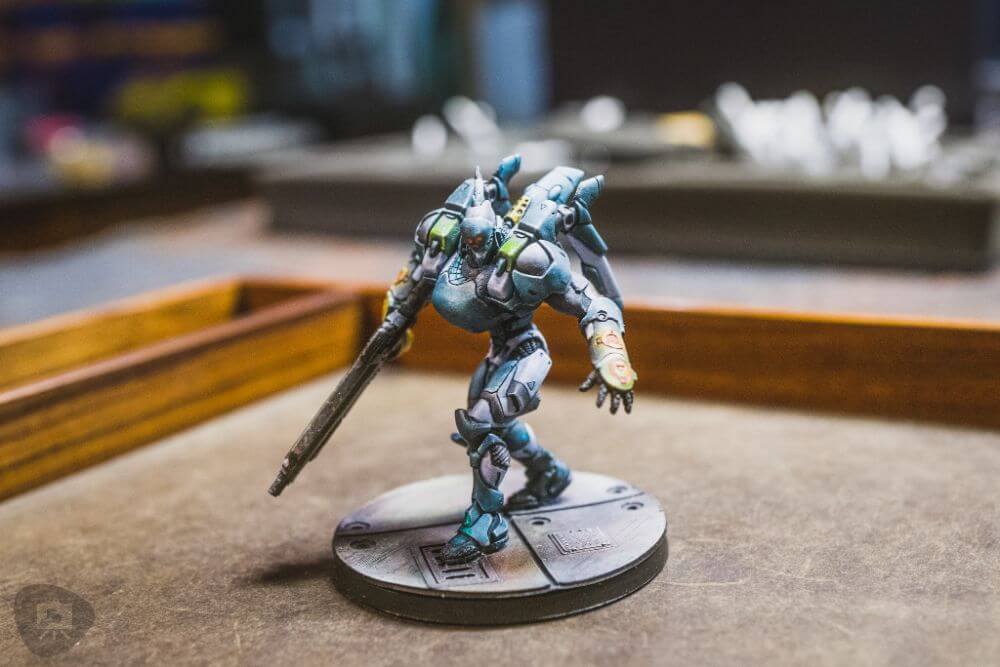
Quick Note on Color Photography
When photographing your painted miniatures, understanding how to use color saturation can help you create a desired effect through an increase in color gamut and overall color rendering. Most of these adjustments are made in photo editing software, but also somewhat rely on the kind of lighting you used to take the picture.
In post-processing software, for example, the color saturation adjustment for editing a photograph of a painted miniature directly affects how well you show off your paint job. Of course, be careful of overdoing your color saturation, otherwise your image will appear gaudy, cartoonish, and unrealistic, as though something is “off”.
On the other hand, if you’re looking for a muted, duller or less intense image, decreasing the saturation will do this. Maybe you want to get that grimdark special fx–here you can try reducing your photo’s color saturation, and bumping up the contrast.
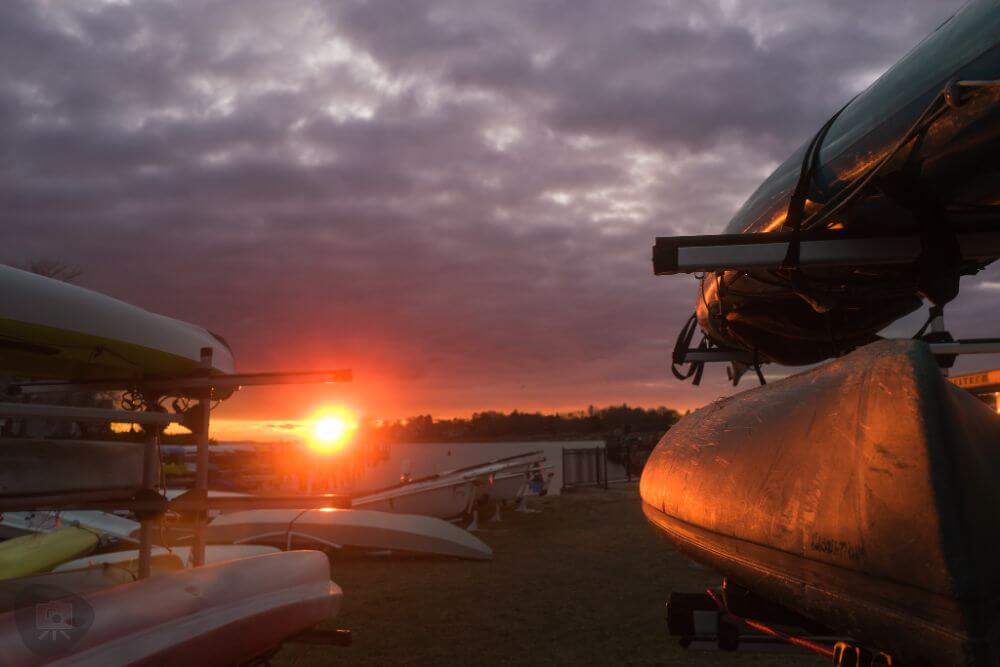
How to Leverage Ambient Light for Visual Impact
This particular aspect of understanding color underlies how high end art galleries choose the proper light source, e.g., energy efficient lighting fixtures with high CRI ratings. An art gallery may want to represent objects faithfully or modify the atmosphere of a particular space.
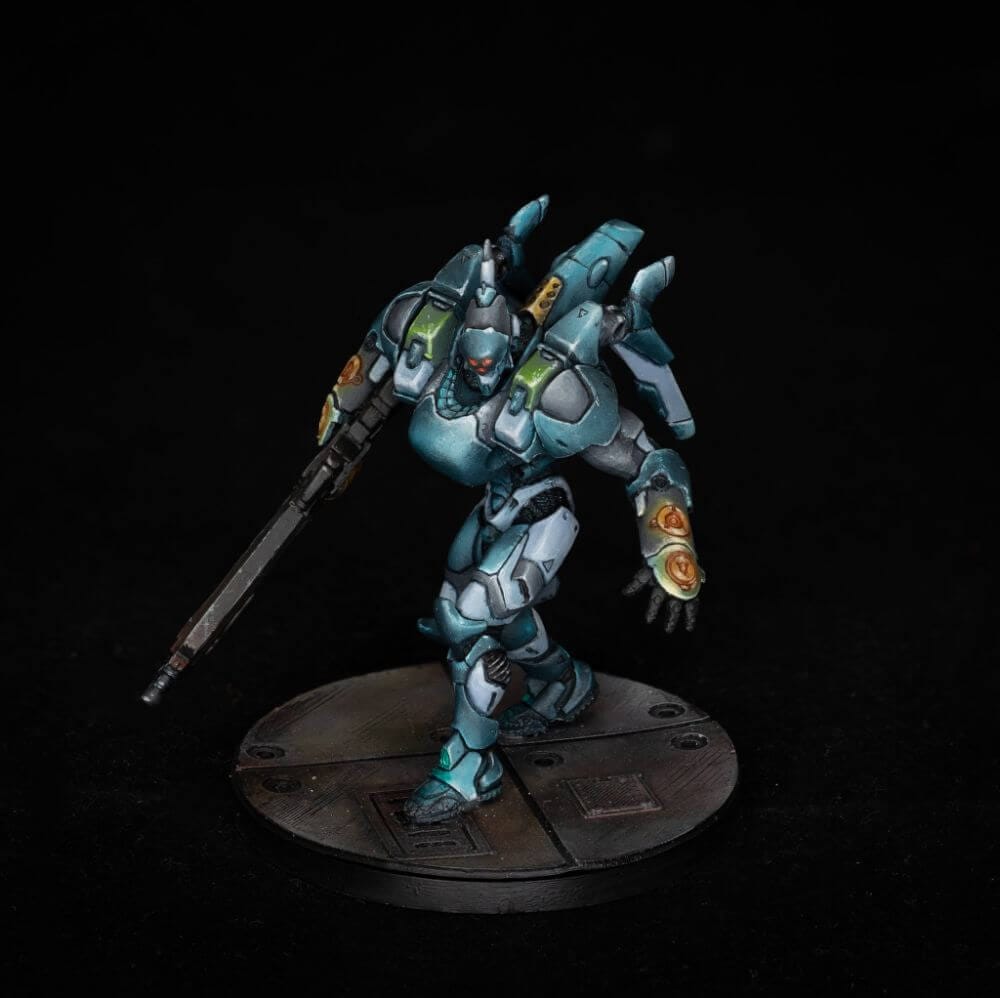
Because lighting quality and accurate color rendition plays a major role in the close visual assessment of all art, the process of lighting artwork becomes just as important as the work itself.
The same goes for seeing and photographing miniatures as well. Increasing color saturation through judicious use of a proper artificial lighting can make a miniature look more vivid and lifelike, while decreasing it can make it look more muted or subdued. Knowing how to modify color saturation through appropriate lighting strategies and gear can optimize how you to capture miniatures in photos (source).
Overall, color saturation is an important element of color that affects our ability to paint miniatures, see them, and photograph them.
Conclusion
LED CRI is just one measure of LED technology, but it’s a very important one. High CRI provides excellent color reproduction and quality, meaning that the colors you see on your miniatures and models will be more accurate and vivid while you work on them or create photos and videos.
If you’re wondering about how CRI in lighting systems can help or hurt you, remember that higher CRI is always better. Investing in a miniature painting light with excellent CRI (>90-95) and other features can make a big difference in your finished work.
In the end, it’s important to remember that you get what you pay for. Don’t skimp on quality when it comes to lighting–investing in the best lamp you can afford will help you create art in more comfort. And do you know what they say about comfort? Um, I actually don’t. But I think it’s what we all want: Comfort and creativity!
I hope you enjoyed this article and found it enjoyable! Keep creating!
Thanks for reading!


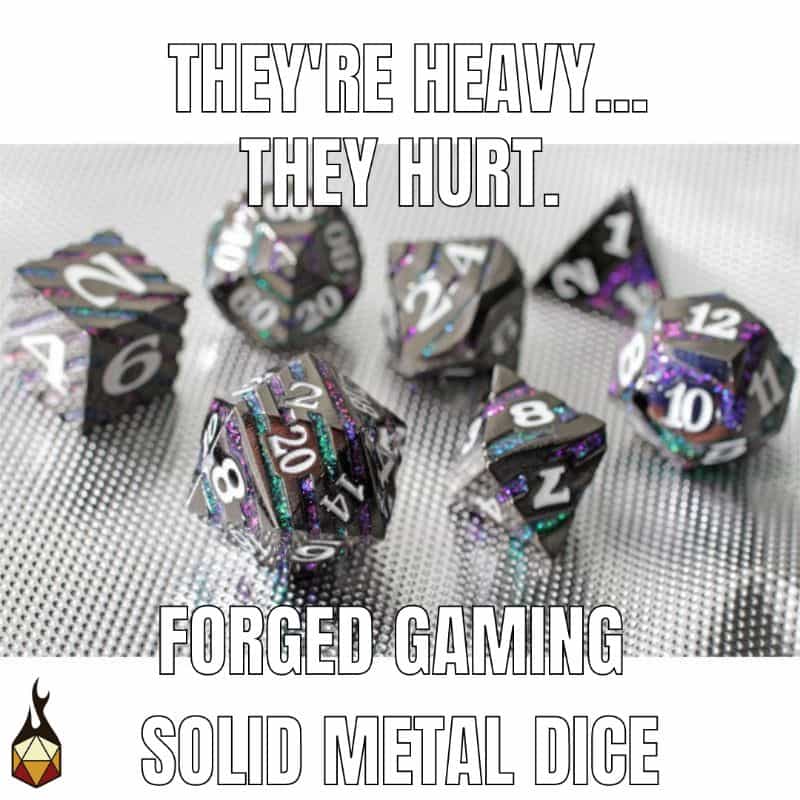


Tangible Day on YouTube (Miniatures and More!)



Pingback: 11 Great Tips for Awesome Night Photography - Tangible Day